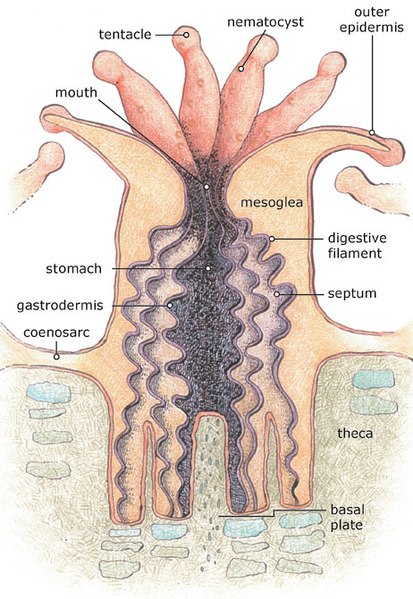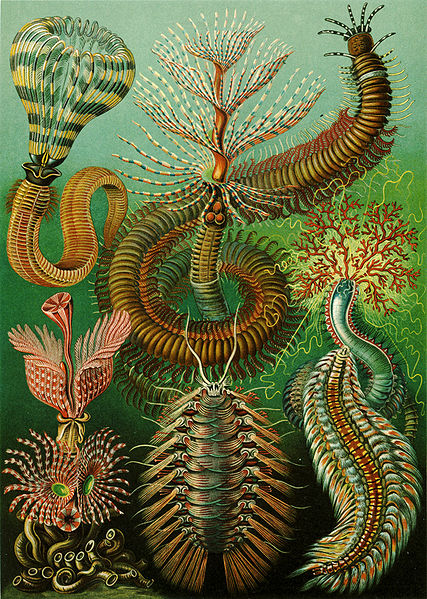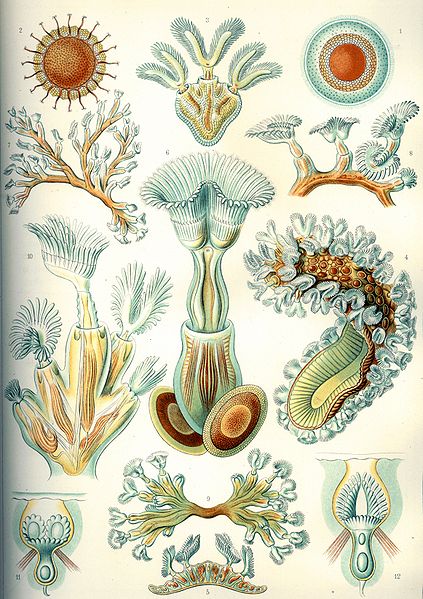Corals are colonial marine invertebrates within the class Anthozoa of the phylum Cnidaria. They typically form compact colonies of many identical individual polyps. Coral species include the important reef builders that inhabit tropical oceans and secrete calcium carbonate to form a hard skeleton.
Coral
Coral
Anatomy of a stony coral polyp
Montastraea cavernosa polyps with tentacles extended
Marine invertebrates are the invertebrates that live in marine habitats. Invertebrate is a blanket term that includes all animals apart from the vertebrate members of the chordate phylum. Invertebrates lack a vertebral column, and some have evolved a shell or a hard exoskeleton. As on land and in the air, marine invertebrates have a large variety of body plans, and have been categorised into over 30 phyla. They make up most of the macroscopic life in the oceans.
Ernst Haeckel's 96th plate, showing some marine invertebrates. Marine invertebrates have a large variety of body plans, which are currently categorised into over 30 phyla.
Dickinsonia may be the earliest animal. They appear in the fossil record 571 million to 541 million years ago.
Kimberella, an early mollusc important for understanding the Cambrian explosion. Invertebrates are grouped into different phyla (body plans).
Bryozoa, from Ernst Haeckel's Kunstformen der Natur, 1904








